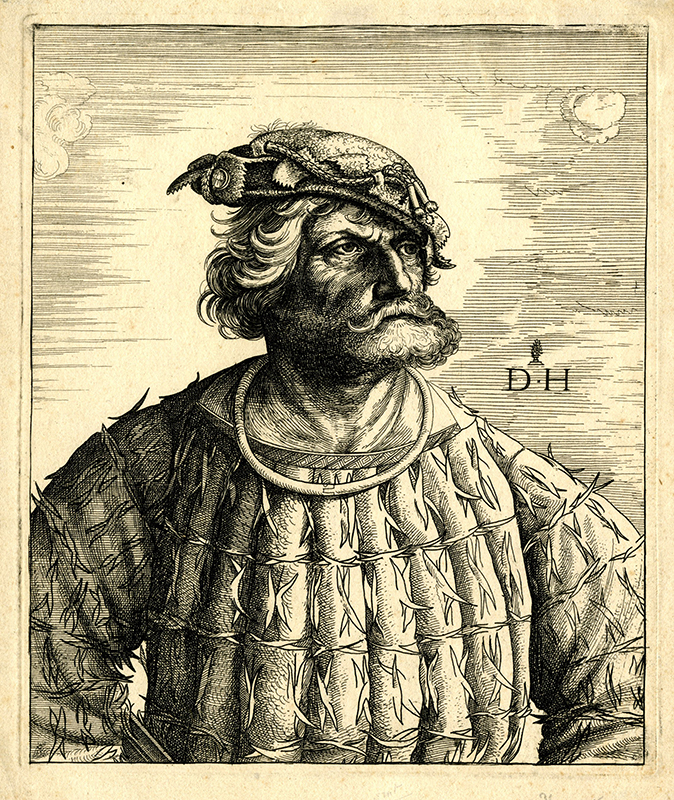
19th, 20th & 21st Century Fine Prints
707-546-7352 · fax 707-546-7924 · web: www.annexgalleries.com · email: artannex@aol.com
Kunz (Conrad) von der Rosen, Court Jester of Emperor Maximillian I (reverse copy after Hopfer) by Daniel Hopfer

Kunz (Conrad) von der Rosen, Court Jester of Emperor Maximillian I (reverse copy after Hopfer)
Daniel Hopfer
Kunz (Conrad) von der Rosen, Court Jester of Emperor Maximillian I (reverse copy after Hopfer)
This etching is a 17th century copy, an impression done after Hopfer's etching of the same subject done in 1515 (in reverse of this, turned to the left). The artist of this work is not identified but "credits" the image to Hopfer by adding his initials in the image.
This impression has the collector's stamp of F.G. Rice (Lugt 1042a) on the verso.
A jester was a historical entertainer either employed to entertain a ruler or other nobility in medieval or Tudor times or was an itinerant performer who entertained common folk at fairs and markets. Jesters in medieval times are often thought to have worn brightly coloured clothes and eccentric hats in a motley pattern and their modern counterparts usually mimic this costume. In medieval times jesters entertained with a wide variety of skills which could include songs, music, storytelling, acrobatics, juggling, and magic. Much of the entertainment was performed in a comic style and many jesters made contemporary jokes in word or song about people or events well known to their audiences. They often acted as an intermediary between the people and the ruler, using satire to communicate the real social concerns without the concern of losing their heads.
The subject of this print is also often identified as Klaus Stortbecker (1360-1401), the infamous pirate who roamed the North Sea and Baltic Sea coast as the leader of a group of pirates who were called the "Victual Brothers." He was beheaded in 1401. No authentic portrait of Stortbecker is known and both Hopfer's portrait and this portrait have been appropriated by historians.
